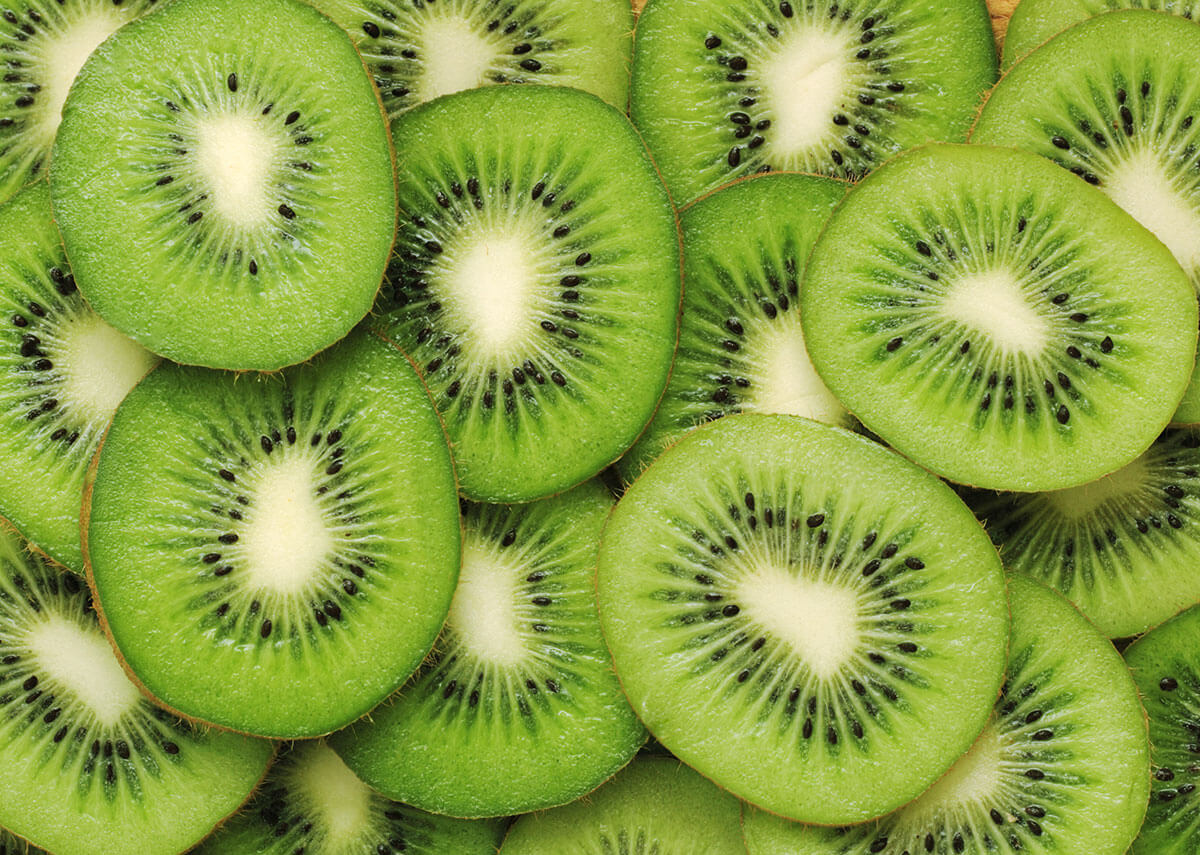
It’s not just oranges! Vitamin C food sources are all over the produce section. We love naval oranges and their 83 mg of Vitamin C, 138% of the recommended daily allowance, but since we believe we need a lot more Vitamin C than the measly amount to just avoid scurvy, we need a lot more variety than citrus.
These are the ten highest food sources of Vitamin C you can find in almost every grocery store.
Red Bell Peppers
As one of the major Vitamin C food sources, these crunchy veggies are more powerful than the orange. Yep, a cup of raw red bell peppers contains a whopping 190 mg of Vitamin C, 317% of the recommended daily allowance.
Red peppers are also a solid source of Vitamin A precursor beta-carotene, which our bodies convert into retinol. Between the Vitamin A provitamin content and as one of the most robust sources of Vitamin C, the red bell pepper can make quite the case for itself as an essential anti-aging food.
Kiwis
One great thing about fruit sources of Vitamin C is that they are rarely cooked, thus unlikely to lose their vitamin content in water. Like the mighty orange, the kiwi is a citrus and thus one of the most robust sources of Vitamin C. Boasting 70 mg in a small fruit — without the furry skin, of course — the kiwi is replete with Vitamin C. And it’s a nice change of color. Like the aforementioned broccoli, the kiwi is a great source of Vitamin K.
Strawberries
One cup of these dessert-like berries gives you 149% of your recommended daily allowance of Vitamin C. That portion also gives you 9% of your daily folate intake. Folate, also known as Vitamin B9, has been the subject of much research in its relationship to decreasing the risk of neural tube birth defects.
Broccoli
Broccoli is one of the best sources of Vitamin C right next to the orange in its Vitamin C density. One cup of raw broccoli — about 2 servings as listed on a frozen bag — contains 81 mg of Vitamin C. Note the “raw” caveat. Since Vitamin C is water soluble, cooking broccoli (and red pepper for that matter) in water can cause the Vitamin C to leach out of the food and into the cooking water. To preserve the Vitamin C content, you may want to consider cooking methods that use less water. Steaming, roasting, and stir-frying can help you maintain broccoli as one of the densest sources of Vitamin C.
Eating your broccoli can also help you get your Vitamin K, a fat-soluble vitamin that is critical for blood clotting and bone health. Deficiency is rare, but supplementation is often advised for those taking blood thinners.
Brussels Sprouts
Another green cruciferous vegetable, the Brussels sprout is similar in vitamin content to broccoli. One cup boasts 125% of the recommended daily allowance with 89 mg of Vitamin C. It’s also replete with Vitamin K at a whopping 195% of the daily dose.
Papaya
A cup of this tropical delight has about 88 mg of Vitamin C, along with vitamins A, E, K, and B9 (folate). The reddish tint of the flesh indicate the powerful antioxidant lycopene.
Pineapple
Just one cup of pineapple chunks contains about 80 mg of Vitamin C. Along with some B vitamins and minerals, pineapples are a great source of digestive enzyme bromelain.
Mango
It may taste like a sweet treat, but one mango is an antioxidant bomb. Along with 60 mg of Vitamin C, these tropical fruits also have beta-carotene, polyphenols, and flavanoids.
Tomatoes
Raw, red, and ripe, these often debated botanical fruits are inarguably a strong source of Vitamin C. A cup of cherry tomatoes contain 19 mg of Vitamin C — about a third of the RDA. That same cup also boast 10 mg of choline, an essential micronutrient that we need to keep our neurotransmitters functioning. Phosphatidycholine is actually the encapsulation material we use in our Lypo-Spheric® supplements, in 10X the amount found in a cup of cherry tomatoes.
Cantaloupes
Get out your melon baller because a cup of cantaloupe balls nets you whopping 100% of your Vitamin C RDA. It also contains more than 10% of your daily potassium intake, making this melon a perfect treat to replenish your electrolytes after a sweaty workout.
When Vitamin C food sources aren’t enough
It’s pretty easy to find other sources of Vitamin C based on this list. These foods have a lot in common as they’re all fruits or vegetables — or both depending who you ask. So, when you’re looking to add more Vitamin C to your diet, filling your plate with citrus, peppers, cruciferous veggies, and berries is a safe way to ward off scurvy. If you’re looking to raise your Vitamin C intake to the levels many experts claim are necessary to be more proactive in your health, check out Lypo-Spheric® Vitamin C supplements.







